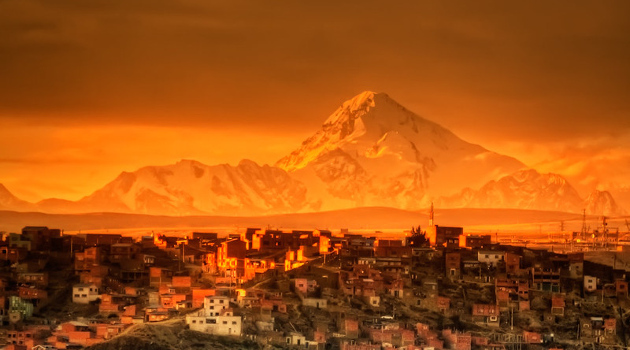When I wrote about South America, it’s almost always to cite developments in Chile, Argentina, and Venezuela.
That’s because those countries clearly show, respectively, the consequences of good, bad, and terrible economic policies.*
Today, though, I’m going to write about Bolivia, a South American country that has received only two meaningful mentions in 15 years of writing this column.
- In 2011, I mocked the then-Bolivian president after he declared a right to keep stolen property.
- Earlier this year, I wrote about how over-spending has created economic and political unrest.
Since bad policy has been the norm in Bolivia, you won’t be surprised to learn that it has dismal economic outcomes compared to other nations in the region.
Here’s a chart showing per-capita GDP in selected nations over the past 15 years. Simply stated, Bolivia is a bottom dweller when looking at economic performance.

Why does Bolivia lag other nations?
In a column published by the Foundation for Economic Education, Fabricio Antezana Duran gives five reasons why Bolivia’s economy is a failure.
Operating for almost two decades under a socialist regime has taken a toll on the Bolivian economy… 1) Nationalization of Natural Resources… Bolivia was poised to experience one of the biggest “economic booms” and investment opportunities with the hydrocarbon industry… However, the 2009 constitution under Movimiento al Socialismo, specifically Article 311, nationalized this industry and almost every other natural resource, ranging from water and minerals to electricity. …2) Conditional Private Property… Bolivia’s 2009 constitution rewrote the rules regarding private property, declaring in Article 56: “Everyone has the right to individual or collective private property, provided that it fulfills a social function.” …The lack of property rights scares investors away and greatly hinders Bolivian businesses. 3) From 3 Ministries to 17 Ministries and 22 Vice Ministries… the party has gradually created more ministries and public offices, each more unnecessary than the last. The creation of new public offices serves as an excuse to create more “state parasites,”…diverting able-bodied individuals from creating value in society. …4) Over 60 State-Owned Businesses… The government’s economic model is called Modelo Económico Social Comunitario Productivo (“Social Economic Productive Community Model”—again with the creative names). This “model” is ambiguous, has a social character, and essentially puts the state at the center of economic progress and development, declaring it their duty. For this reason, the government has created over 60 businesses, all of which are deficit-prone and arbitrary to the economy. …5) High Taxes and a Bureaucratic Tax System… Bolivia has one of the worst taxation systems in the world, ranked 186 out of 190 countries according to the World Bank’s Doing Business report. …Bolivians spend 1,025 hours every year to pay their taxes properly (over 42 days!) and risk paying a rate of 83.7 percent of their profits if they don’t file them correctly. A study by economic analyst Diego Sánchez de la Cruz labeled Bolivia as the “tax hell” of Latin America, ranking it the worst in tax pressure and tax effort.
What’s the bottom line?
Here’s an excerpt from the column’s conclusion.
Movimiento al Socialismo reaped the benefits of the pro-market economic reforms of the 1980s and 1990s, but now Bolivia is beginning to harvest the fruits of nearly two decades of socialism: crisis, misery, and decay.
I’ll close by noting that economic freedom in Bolivia dramatically increased during the era of the “Washington Consensus.”
But this century, Bolivia has become more statist. It now ranks only #117 for economic liberty, which is even worse than Russia or China.
There’s a recipe for Bolivian prosperity, but don’t hold your breath waiting for that nation’s politicians to follow it.
*If we’re looking only at 2024, Argentina is an example of a nation following the right recipe.
———
Image credit: Pedro Szekely | CC BY-NC-SA 2.0.


